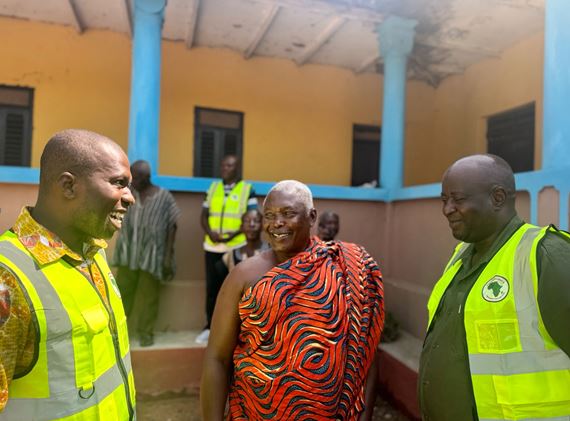
Preliminary exploration data show promising developments for iron ore prospects in the Oti Region with substantial commercial viability that could represent a notable addition to the country’s resource portfolio.
Global iron ore demand is projected to rise by three percent annually, driven by construction and industrial needs.
The Ghana Integrated Iron and Steel Development Corporation (GIISDEC) and its technical partner, Africa Exploration and Minerals Group (AEMG), have been leading work in the Gyamurume community of Kadjebi district since 2020.
Initial findings from the exploration indicate that these iron ore deposits could be among the best in the West African sub-region.
According to preliminary data, some samples contain up to 82 percent iron oxide… which translates to about 57 percent iron. On average the oxidised ores contain around 67 percent iron oxide, or 47 percent iron.
“The preliminary results they are showing, as far as the eye can see, point to a very good grade. These numbers are based on initial tests and we still have to verify them through laboratory analysis, but they’re encouraging,” William Okofu Darteh, Chief Executive Officer-GIISDEC stated.
If confirmed, the grades could be higher than some deposits currently being mined in other parts of Africa. This possibility has attracted the attention of potential investors.
Exploration efforts so far have involved remote sensing and geophysical surveys, which helped AEMG identify 11 drilling targets from an initial 54 areas. Drilling began in mid-2024 and the team has completed eight of a planned 30 drill holes.
The drilling is expected to be completed by June 2025 with a comprehensive resource estimate to follow by September.
The chief geologist at AEMG, Franklin Mace, explained that they are hitting banded iron formations that are averaging about 30 metres in width.
What’s more they have also found serpentinite rocks, which could point to the presence of nickel. That was unexpected but could add more value to the project.
Over 100 rock samples have been tested by Intertek Laboratory and the University of Ghana. Results from those tests confirm that the area contains high iron content.
According to Mr. Darteh, once the drilling is complete and the resource estimate is ready, GIISDEC will use the data to attract investment into the sector.
The country holds approximately 1.7 billion tonnes of iron ore reserves, including the Shieni deposit (1.3 billion tonnes at 33.8 percent Fe) and Opon-Mansi (147 million tonnes at 52.5 percent Fe).









